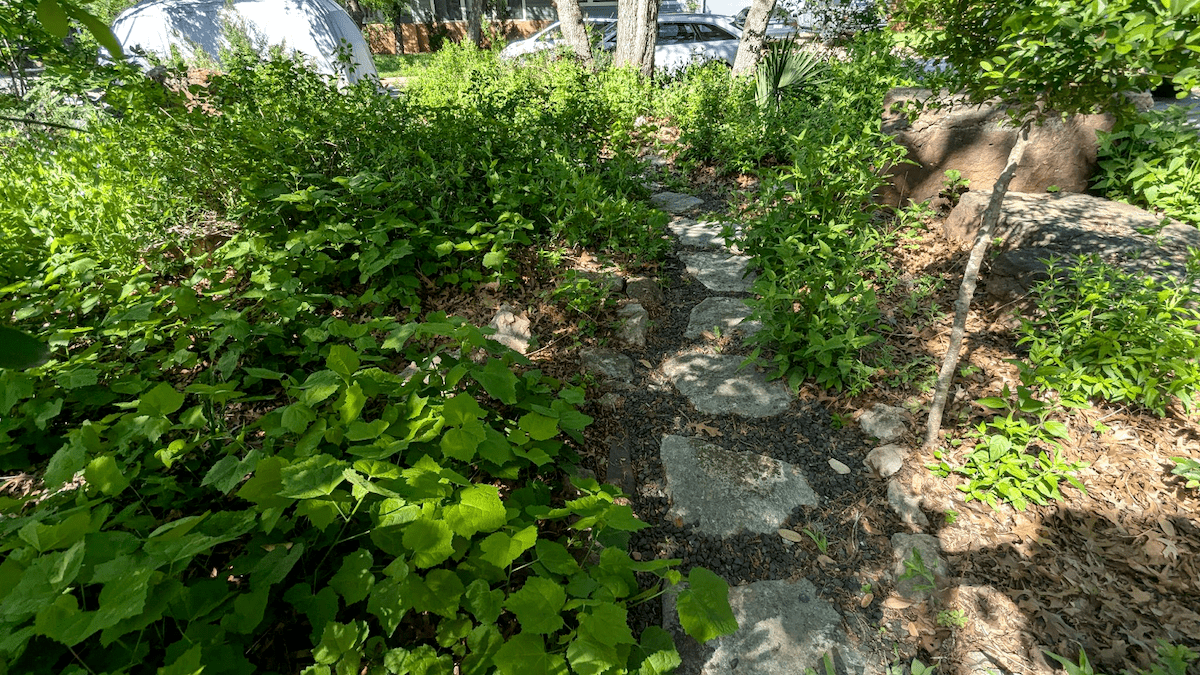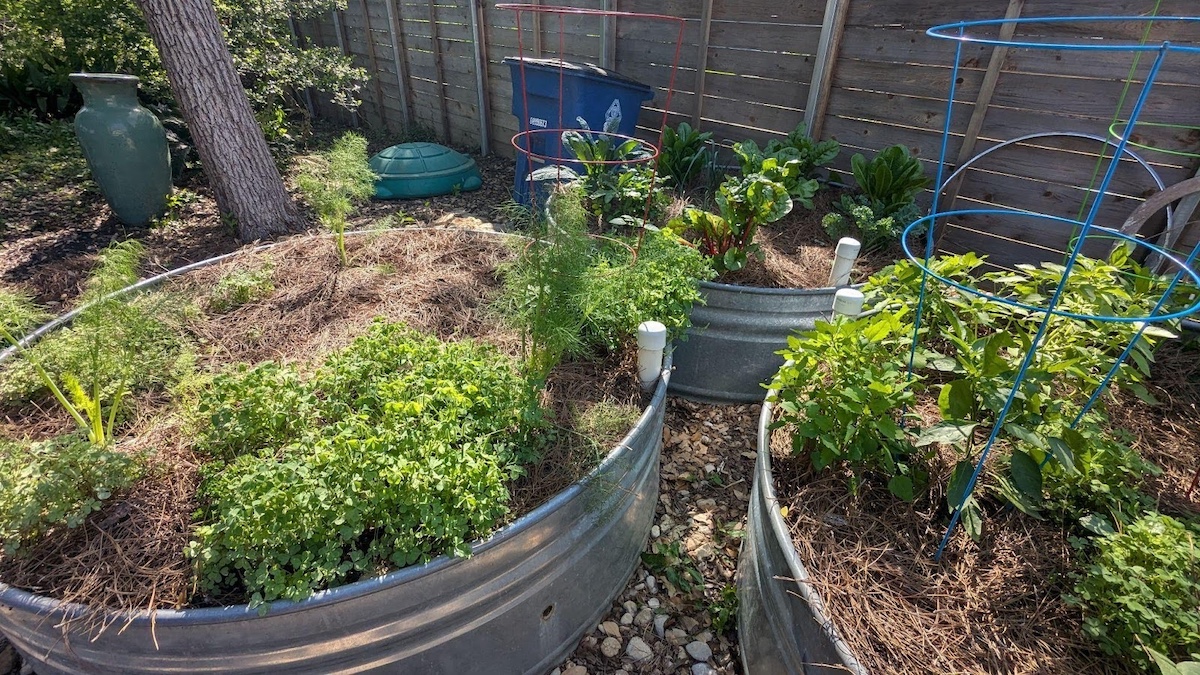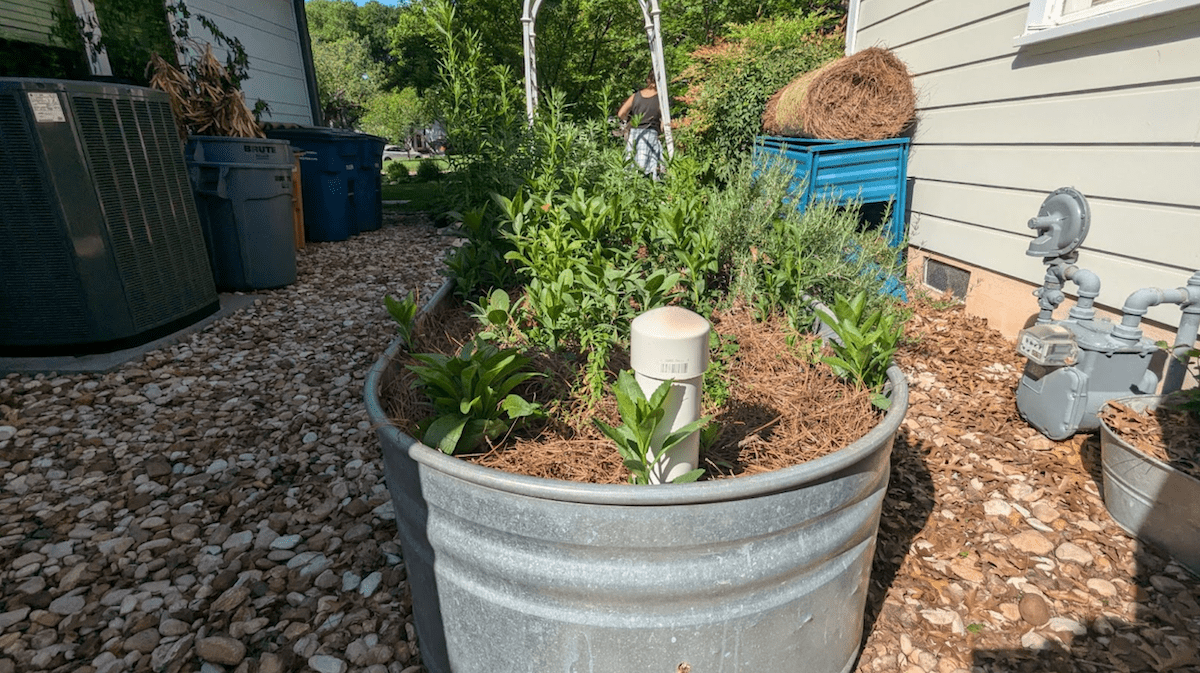Waterwise Landscapes Inspiration – Wicking Beds
April 16, 2025 | By Shoal Creek Conservancy
SCC is shining a spotlight on our creekside neighbors, Monica and Geoff, who are using several water conservation strategies at their home on Shoal Creek.

Their property does not have turf grass and instead features diverse native plantings in the front yard and raised beds for veggies and herbs in the side and back yards. The native plantings in the front yard don’t require any supplemental watering, even in the summer heat, and these plants create wonderful wildlife habitat along Shoal Creek. The replacement of turf grass with native plantings also means that no fertilizer is needed, which is another benefit for creek health.

 All of the raised garden beds are set up as wicking beds, which is another water conservation strategy. Wicking beds are watered via a pipe, which directs water to spread out along the bottom of the bed. From there, it can be wicked up to the soil and plant roots above, which means no water is lost to evaporation, and plants are encouraged to develop deep root systems.
All of the raised garden beds are set up as wicking beds, which is another water conservation strategy. Wicking beds are watered via a pipe, which directs water to spread out along the bottom of the bed. From there, it can be wicked up to the soil and plant roots above, which means no water is lost to evaporation, and plants are encouraged to develop deep root systems.
Construction of Monica and Geoff’s wicking beds
Materials:
1) Metal stock tank with the bottom intact.
2) PVC pipe that makes an L bend. Pipe is capped at both ends. The above-ground cap is removable. The lower section of the pipe that lays along the bottom of the bed has holes drilled in it.
3) Pea gravel to fill the bottom half of the bed and cover the lower section of pipe.
4) Two layers of landscape fabric on top of the pea gravel. A drainage hole is then drilled in the side of the tank, at the level of the top of the pea gravel/landscape fabric (see above photo).
5) Soil (your preferred raised bed mix, compost, etc.) goes on top of the landscape fabric.
6) Plants and mulch.
The tank is filled via the PVC pipe end that sticks up above the soil – just uncap and fill it. When water begins to drain from the drainage hole on the side of the tank (positioned at the top edge of the pea gravel section), stop filling. The water is held in the lower pea gravel section of the tank and slowly wicks up into the soil so that none is lost to evaporation. The plants will develop deep root systems as they reach down for water.
Monica and Geoff fill their wicking beds about once a week in the hot season and about once every other week when not in the hot season. They top-water only when starting seedlings, and then they transition to pipe watering (wicking) once plants are a bit bigger.

Information about wicking beds from Austin PARD (link) and Austin Organic Gardeners (video).
Happy gardening!
The Shoal Creek Watershed Action Plan is a cooperative project funded in part by the Texas Commission on Environmental Quality through a Clean Water Act, Section 319(h) Nonpoint Source Management grant from the U.S. Environmental Protection Agency.
